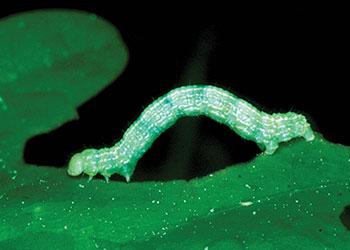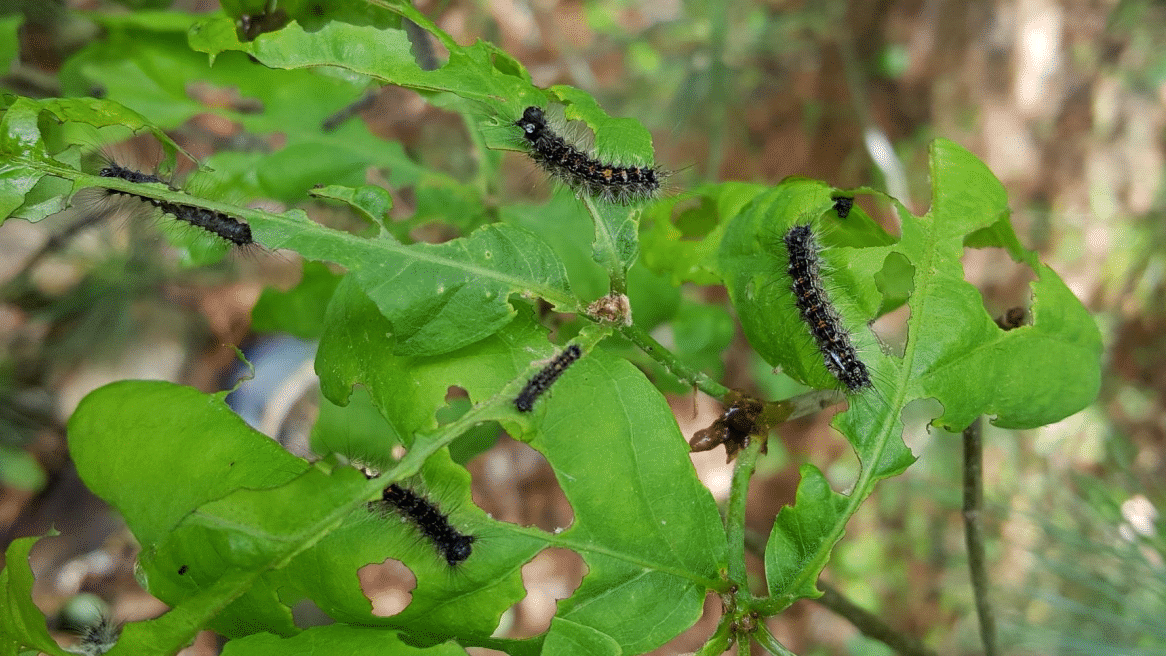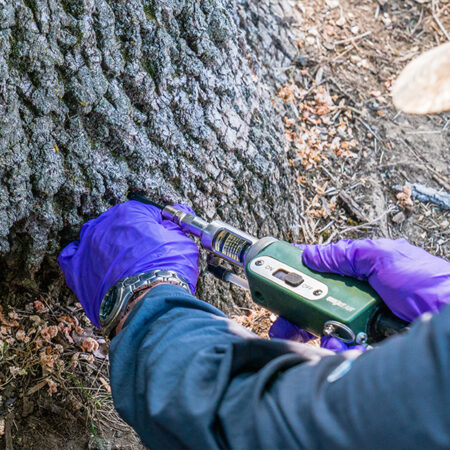Springtime heralds the emergence of new growth, including insect larvae. While many insects can damage trees and plants in all their life stages, in spring caterpillars are the primary culprit to watch out for.
Caterpillars are voracious eaters and will go through huge amounts of leaves in order to get the nutrients they need to complete metamorphosis. This means that large numbers of leaf-chewing caterpillars can cause heavy damage to trees, leading to lasting damage or even tree death.
Here’s some more information on how to spot them and treat for them.
About Leaf Chewing Caterpillars
Many leaf-chewing caterpillars target specific trees, though some have broader ranges of host plants. Many emerge in spring, when trees are using energy to grow new leaves and emerge from winter dormancy. When trees are stripped of their leaves, they either need to spend additional energy growing leaves again, or spend the season defoliated. Repeated defoliation will lead to tree death, even in large and healthy trees.
Many adult lepidoptera don’t eat leaves (if they can eat at all) but they will lay eggs in different places around their target trees. Huge clusters of spongy moth egg masses on trunks, branches, and sides of buildings is a common site in infested states. Egg masses generally survive over winter until they hatch again in spring. Different species have different hatch times, so check to see when the pests near you will emerge.

Signs of Damage
The easiest thing to look for is the caterpillar themselves, which you may see crawling up tree trunks to get to the leaves. Know how to identify the most common leaf-chewing caterpillars in your region, including invasive species like spongy moth and winter moth.
Look for trees with reduced leaf cover when they should have full leaves, or leaves full of holes. Different caterpillars eat leaves in different ways, but often skeletonize leaves by chewing the soft tissue between leaf veins. During bad infestations, trees will be completely defoliated; some spongy moth outbreaks have left forests looking like they’re in winter!
Look for the caterpillar droppings, or frass, which often take the form of pellets that will litter the ground around the tree.
Some species, like fall webworm or browntail moth, create large webs around trees they’re feeding on, making identification very easy.

Treatment
We recommend two different types of treatments, though both can be applied through trunk injections. This method mitigates environmental harm to off-target insects, water, soil, and people, and ensures the formulations get right to the part of the tree where they’ll be most effective.
Treatments can either be fast-acting knockdowns to provide immediate relief for infested trees, or preventative measures to provide up to two years of protection to trees at risk from further damage. ACE-jet provides broad spectrum control that gets distributed quickly through the tree and works to kill leaf-chewing caterpillars. For long-term protection, inject with TREE-äge G4 in either spring or fall and monitor trees to ensure they’re recovering adequately and that there’s no new damage next spring.
For smaller plants like shrubs and ornamentals that can’t be injected, a soil drench of AzaSol will provide protection; this organic product derived from Neem will be taken into the plant and provide systemic protection against leaf-chewing pests.
Leaf-chewing caterpillars can pose a serious seasonal threat to urban forests and landscapes. With knowledge about what pests are in your area and the right preventative tools, you can ensure your trees will be protected.



